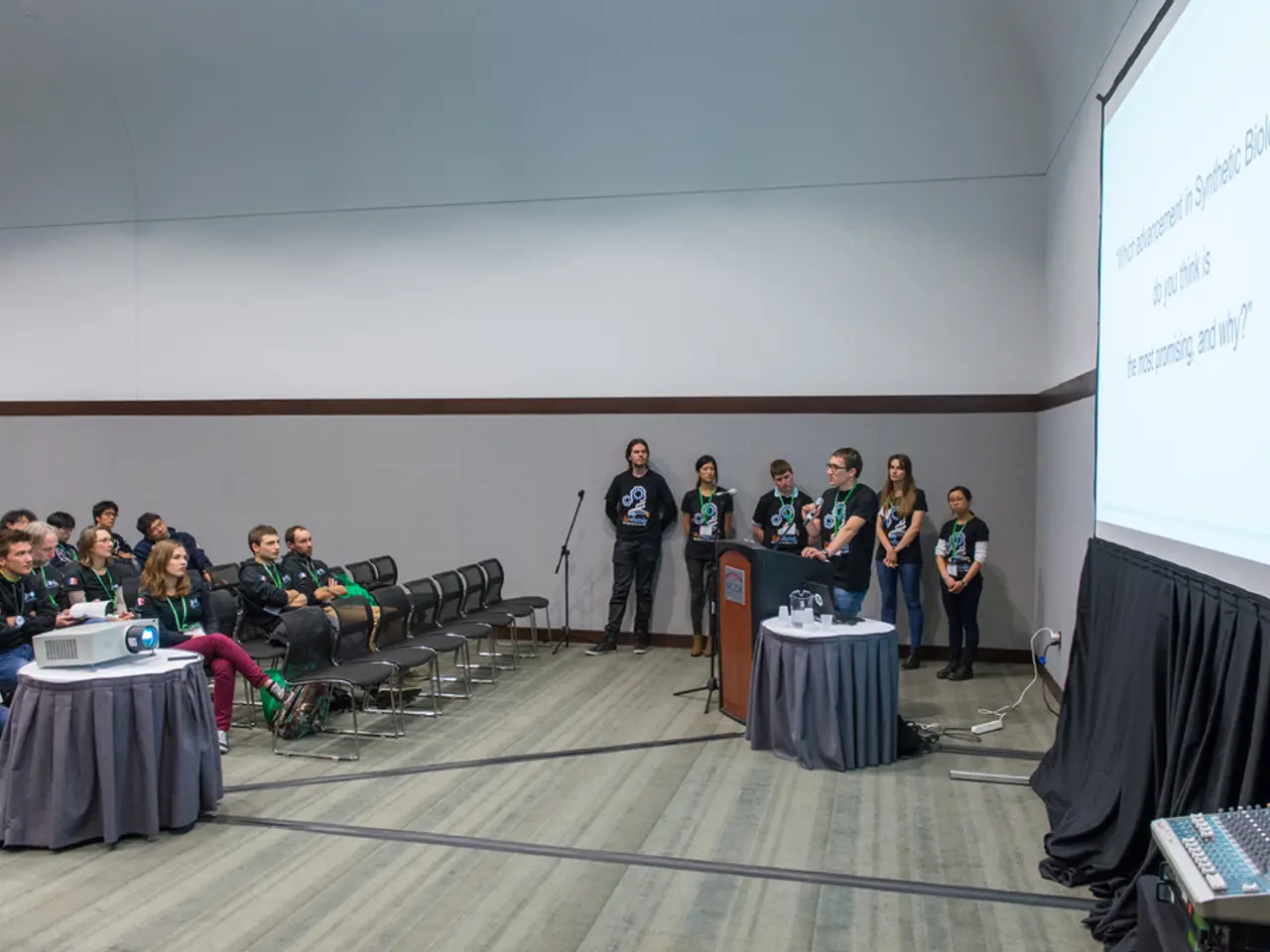OPM is on course to remove approximately 1,000 jobs by the end of the year
In the heart of Washington D.C., the Office of Personnel Management (OPM) is undergoing a significant transformation under the leadership of its new director, Scott Kupor. This transformation is marked by a strict federal hiring freeze, rigorous presidential oversight, and a focus on competency-based merit hiring, all aimed at reducing bureaucratic inefficiencies.
These changes are part of a broader context of fiscal discipline and deregulation, echoing Trump Administration policies that emphasize shrinking government size, reversing prior federal job growth, and eliminating certain Diversity, Equity, and Inclusion (DEI) initiatives.
The restructuring efforts are leading to significant workforce reductions. Over 1,000 OPM employees are either already gone or expected to leave by the end of the year, with about 129 employees terminated through reductions in force (RIFs), while the other 940 employees chose to leave through voluntary separation incentives.
The RIFs have eliminated key offices such as the Human Capital Data Management and Modernization office and the Center for Leadership Development. However, OPM's Retirement Services center has experienced a "very small reduction" during this downsizing.
Kupor is also considering possibilities for moving, reducing, or sharing OPM's office space in downtown Washington, D.C. He believes that the types of jobs and skills needed in OPM may be different in five to ten years, and is interested in changing performance standards for federal employees governmentwide.
As OPM looks to restructure, each agency component will revisit staff attrition over the last several months and determine how to reorient itself moving forward. Kupor's priorities include restructuring and creating work efficiencies within the agency. He plans to prioritize the use of modern technology, embedding it into both the agency's processes and workforce skills.
The restructuring has a significant impact on the federal workforce. Reduced staffing levels across many agencies sometimes eliminate entire offices or redundant positions tied to outdated missions. The shift of duties and functions to fewer staff or other units increases workload and potentially lowers institutional knowledge and expertise.
Despite some agencies walking back planned mass layoffs due to workforce attrition via voluntary programs, others continue with RIFs. These cuts often remove experienced subject matter experts, particularly in science, technology, and compliance offices.
The overall effect on the federal workforce includes reduced staffing levels, a shift of duties and functions to fewer staff, modest walkbacks or adjustments of original RIF plans in some agencies, and ongoing legal uncertainties surrounding RIF actions and DEI bans.
This article is copyrighted by our platform in 2025. It is not intended for users located within the European Economic Area. For further discussions on these recent changes in the federal government, please contact us at [email address] or via Signal at [Signal number].
[1] "OPM's Hiring Freeze and Merit Hiring Plan: What You Need to Know" (URL) [2] "Impact of OPM's Restructuring on Federal Agencies and Workforce" (URL) [3] "The Supreme Court Clears Federal Government to Proceed with RIF Terminations" (URL) [4] "Trump Administration's Policies on Diversity, Equity, and Inclusion Initiatives" (URL) [5] "Federal Agencies Walk Back Planned Mass Layoffs Amid Workforce Attrition" (URL)
- With the restructuring underway at the Office of Personnel Management (OPM) under Director Scott Kupor, the federal workforce is being reimagined to embrace modern technology, as Kupor plans to embed it into both the agency's processes and workforce skills.
- The OPM's transformation, which includes reductions in the workforce and changes in office space, potentially threatens the expertise of subject matter experts, particularly in science, technology, and compliance offices, as some experienced professionals are being removed through Reductions in Force (RIFs).




